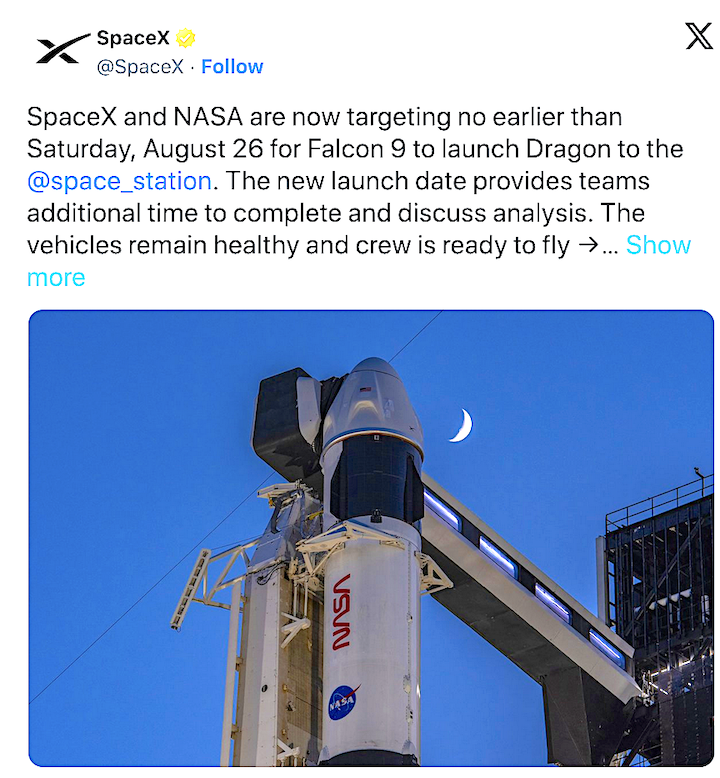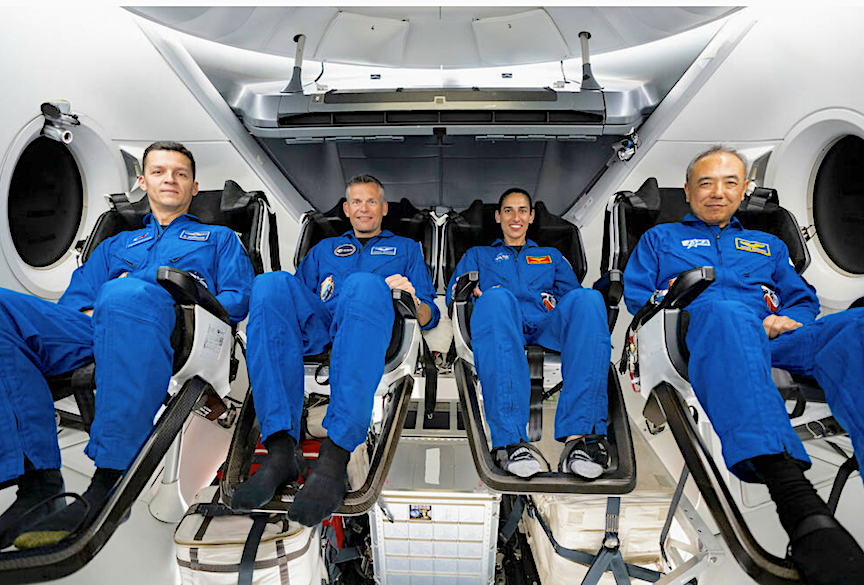
UPDATE #2: On Thursday night Kennedy Space Center, NASA and SpaceX teams stood down from launching three astronauts and a cosmonaut to the International Space Station. Then less than 18 hours later SpaceX teams will attempt a launch ‘doubleheader’ to include the Falcon 9 Starlink from nearby Cape Canaveral Space Force Station.
NASA on Friday morning said in a blog post that “after performing an extra data review, teams decided to take additional time to reconfirm required factors of safety and operational margin on one of the Dragon spacecraft’s environmental control and life support system (ECLSS) components.“
“All ECLSS valves on the Crew-7 and Crew-6 Dragon spacecraft are performing normally, and performed as expected in all preflight testing,” the blog post said. “The new launch date provides teams additional time to complete the analysis and thoroughly review the necessary data ahead of launch.”

The latest weather report from the Space Force’s 45th Weather Squadron projected conditions around the spaceport to be 95% “go” for a Saturday liftoff. Only a slight chance of cumulus clouds was listed as a concern.
Update #1: (Thursday, August 24) At Kennedy Space Center, NASA and SpaceX teams stood down from a first launch attempt of the Crew-7 mission late Thursday night. No reason for the scrub was immediately provided. The next attempt is tentatively set for 3:27 a.m. Saturday.

Credits: SpaceX
SpaceX and NASA are targeting no earlier than Friday, August 25 for Falcon 9’s launch of Dragon’s seventh operational human spaceflight mission (Crew-7) to the International Space Station from Launch Complex 39A (LC-39A) at NASA’s Kennedy Space Center in Florida. The instantaneous launch window is at 3:50 a.m. ET (7:50 UTC), with a backup opportunity available on Saturday, August 26 at 3:27 a.m. ET (7:27 UTC).
The Dragon spacecraft supporting this mission previously flew NASA’s Crew-3 and Crew-5 missions to and from the space station.

Following stage separation, Falcon 9’s first stage will land on Landing Zone 1 (LZ-1) at Cape Canaveral Space Force Station.
During their time on the orbiting laboratory, the crew will conduct science and technology demonstrations to prepare for human exploration beyond low-Earth orbit and to benefit humanity on Earth.
